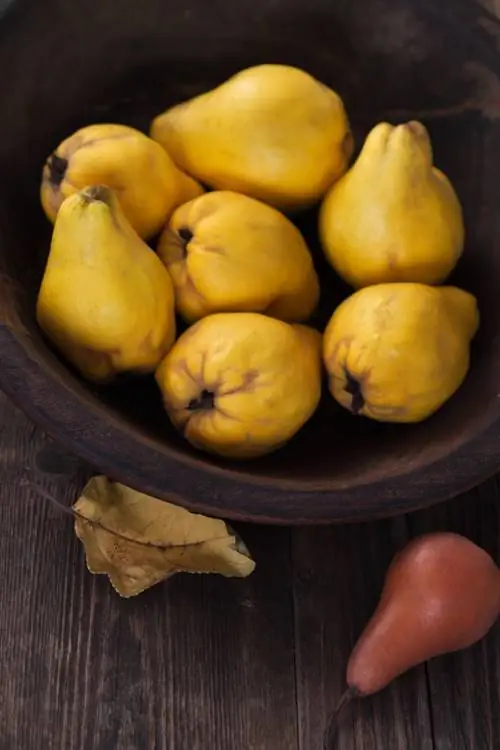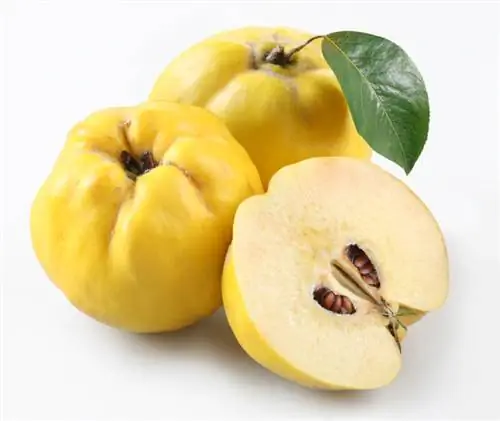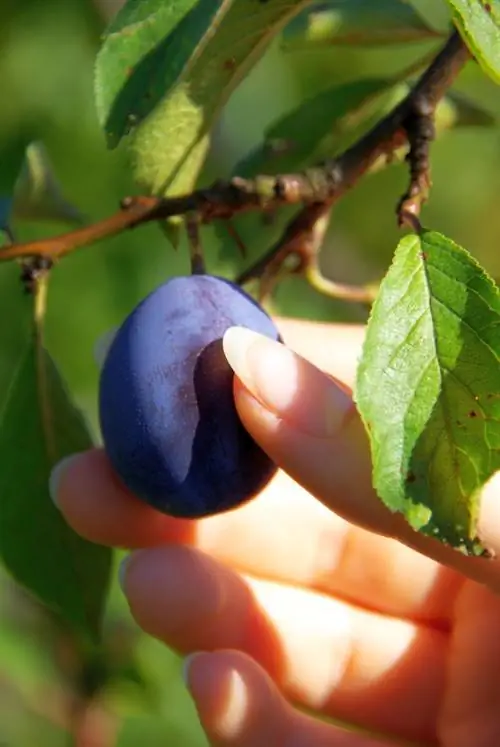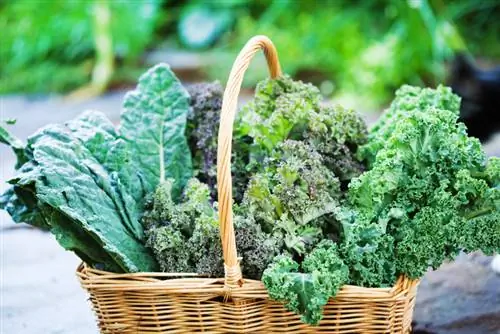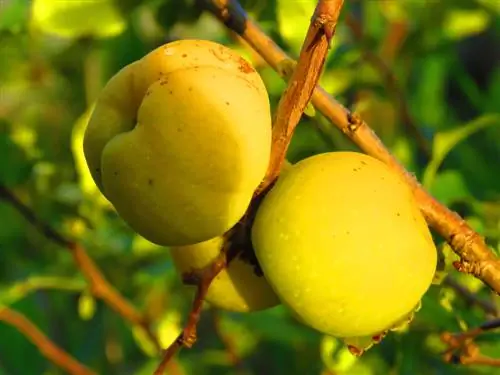- Author admin [email protected].
- Public 2023-12-16 16:46.
- Last modified 2025-01-23 11:21.
The quinces, which come from Asia, can be divided into two types: apple and pear quinces. Although the tasty fruits have been cultivated in our latitudes for a long time, they are still considered exotic. Pear quinces in particular are finding more and more fans. You can find out which varieties there are and how they differ in the following article.

What varieties of pear quince are there?
The popular pear quince varieties are Bereczki, Cydora-Robusta and Portuguese pear quince. They are characterized by their aromatic, sweet and sour flesh and resistance to diseases such as fire blight and mildew.
What distinguishes pear quinces?
The fruits of the pear quince are elongated and shaped like a pear. Since the flesh is softer and has fewer seeds than that of the apple quince, they are easier to process than their round relatives. They are also suitable for raw consumption, for example as an addition to fruit salad. In general, however, the aroma is described as somewhat blander than that of the apple quince species.
Which are the best pear quinces?
- Bereczki: This pear quince was named after the Hungarian pomologist Mate Bereczki, who brought the variety onto the market. Growing vigorously, this quince tree quickly forms an upright, broad tree crown with unusually dense foliage. The large fruits are lemon-yellow in color and some are covered in small, red speckles. The flesh is yellow-white, firm, but only hard around the core. It tastes aromatic, sweet and sour. When cooked it changes the color to reddish.
- Cydora-Robusta: This quince lives up to its name as it proves to be very robust against the dreaded fire blight, leaf spot and powdery mildew. It bears fruit after just two to three years. These smell strongly and have a strong, sweet and sour aroma.
- Portuguese pear quince: This variety is vigorous and upright growing. The bright yellow peel of the quinces has a slight downiness. The flesh of the very large fruits is white-yellow and very juicy. They ripen in mid-October and exude an intoxicating scent.
Extremely delicious: crosses between pear and quince
These include varieties such as the quince pear “Pyronia veitchii”. These hybrids produce very tasty fruits that can be eaten directly from the tree. They have a light, soft and sweet flesh, the aroma of which reflects the cross.
Tip
Fruit flies can be a real nuisance in late summer. Put a ripe quince in the fruit basket and the little flies stay away.

